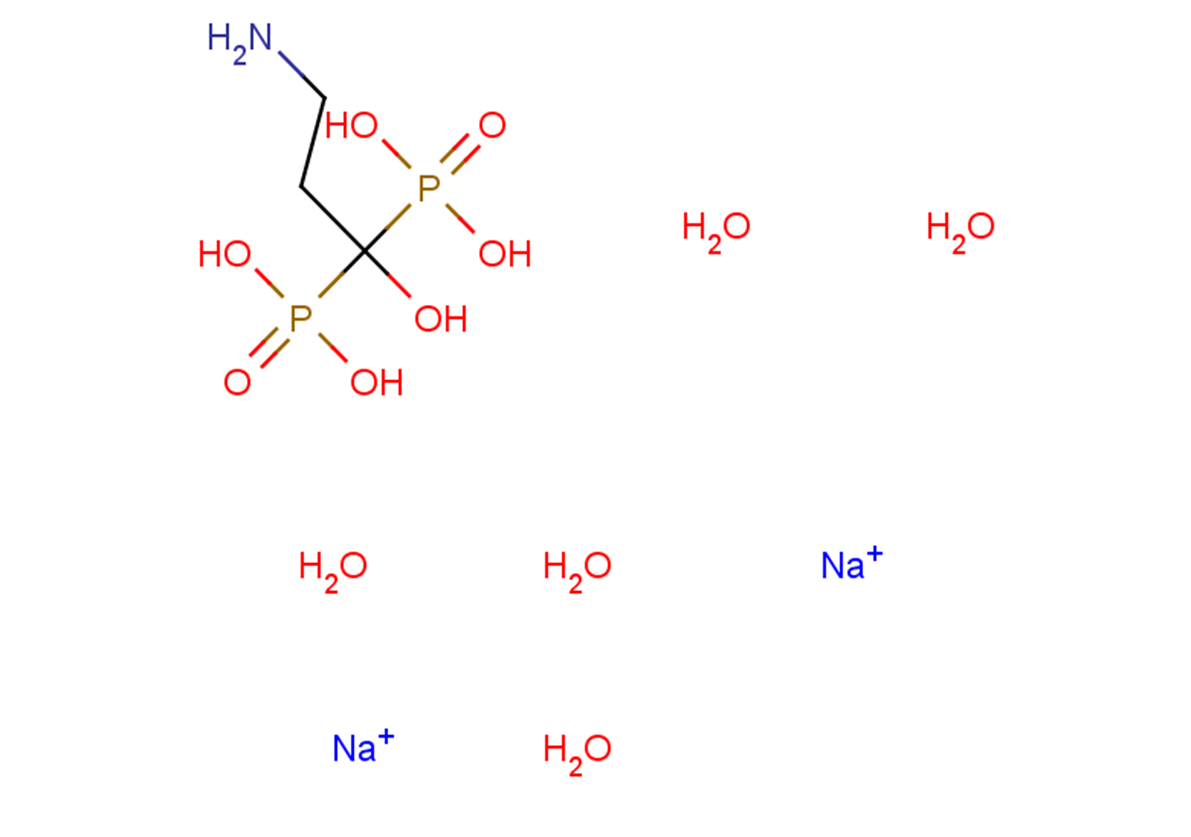
Pamidronate disodium pentahydrate
CAS No. 109552-15-0
Pamidronate disodium pentahydrate( —— )
Catalog No. M23299 CAS No. 109552-15-0
Pamidronate disodium pentahydrate, a nitrogen-containing bisphosphonate, used to prevent osteoporosis.
Purity : >98% (HPLC)
 COA
COA
 Datasheet
Datasheet
 HNMR
HNMR
 HPLC
HPLC
 MSDS
MSDS
 Handing Instructions
Handing Instructions
| Size | Price / USD | Stock | Quantity |
| 5MG | 32 | In Stock |


|
| 10MG | 51 | In Stock |


|
| 25MG | 104 | In Stock |


|
| 50MG | 204 | In Stock |


|
| 100MG | 293 | In Stock |


|
| 200MG | 438 | In Stock |


|
| 500MG | 710 | In Stock |


|
| 1G | Get Quote | In Stock |


|
Biological Information
-
Product NamePamidronate disodium pentahydrate
-
NoteResearch use only, not for human use.
-
Brief DescriptionPamidronate disodium pentahydrate, a nitrogen-containing bisphosphonate, used to prevent osteoporosis.
-
DescriptionPamidronate disodium pentahydrate, a nitrogen-containing bisphosphonate, used to prevent osteoporosis.
-
In Vitro——
-
In Vivo——
-
Synonyms——
-
PathwayOthers
-
TargetOther Targets
-
RecptorOthers
-
Research Area——
-
Indication——
Chemical Information
-
CAS Number109552-15-0
-
Formula Weight371.13
-
Molecular FormulaC3H21NNa2O12P2
-
Purity>98% (HPLC)
-
SolubilityH2O: 7.14 mg/mL (19.24 mM; Need ultrasonic);DMSO: insoluble
-
SMILESOC(P(O)(O)=O)(CCN)P(O)(O)=O.O.O.O.O.[Na+].[Na+].O
-
Chemical Name——
Shipping & Storage Information
-
Storage(-20℃)
-
ShippingWith Ice Pack
-
Stability≥ 2 years
Reference
1.Kubalek I, et al. Treatment of reflex sympathetic dystrophy with pamidronate: 29 cases. Rheumatology (Oxford). 2001 Dec;40(12):1394-7.
molnova catalog



related products
-
Anti-Flt1 Peptide
Anti-Flt1 Peptide
-
PNU-100440
PNU-100440 is a chemical compound.
-
Pomalidomide-C9-COOH
Pomalidomide-C9-COOH is a synthesized E3 ligase ligand-linker conjugate that incorporates the Pomalidomide based CRBN ligand and linker used in PROTAC technology.



 Cart
Cart
 sales@molnova.com
sales@molnova.com


